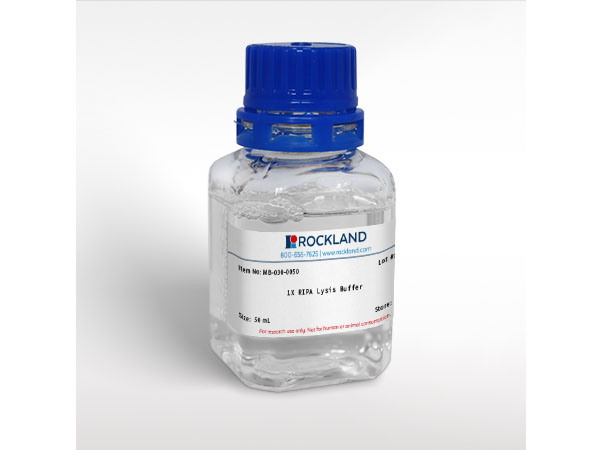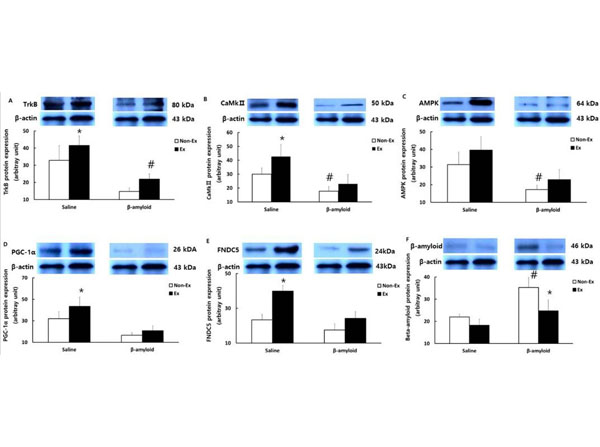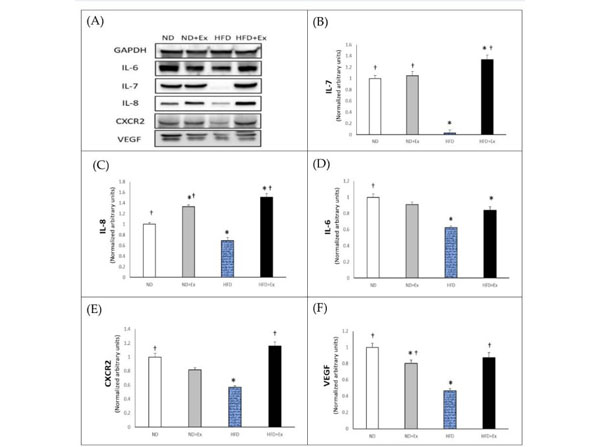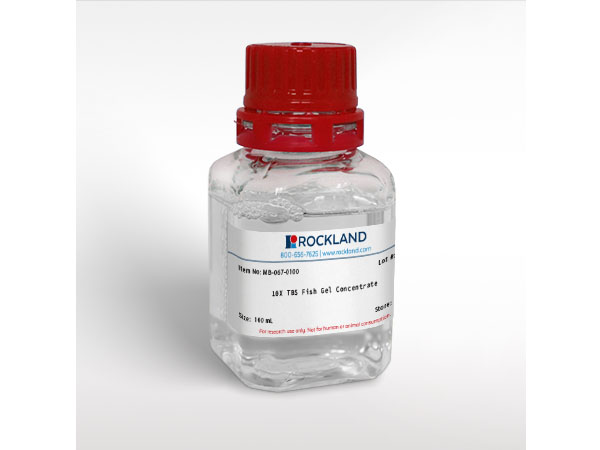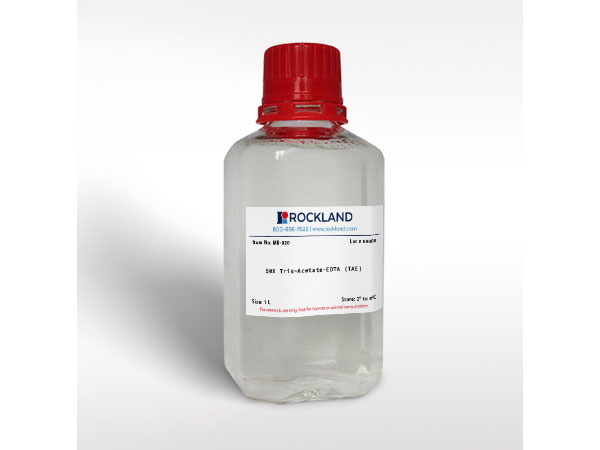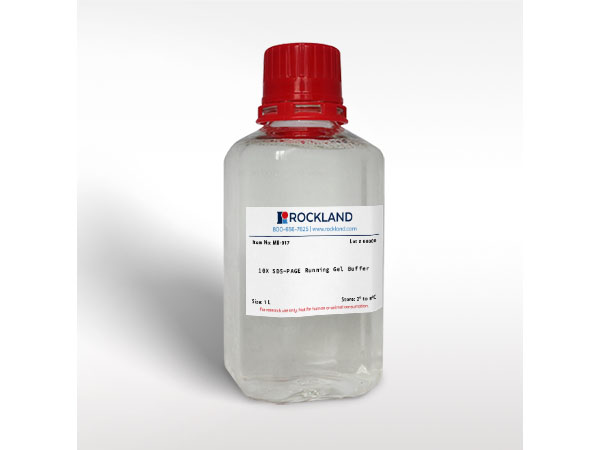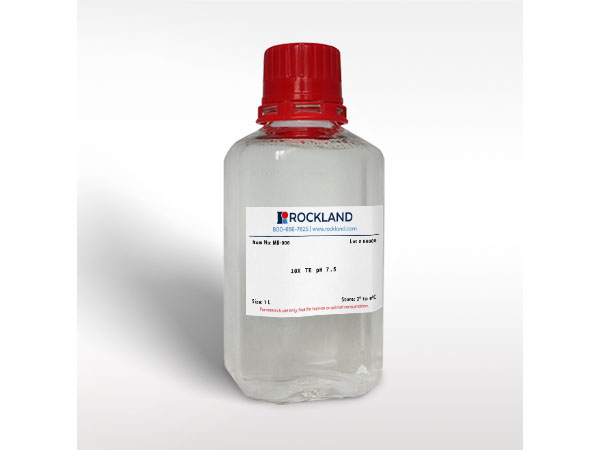1X RIPA Lysis Buffer
22 References
MB-030-0050
MB-030-0250
50 mL
5 x 50 mL
Liquid (sterile filtered)
Liquid (sterile filtered)
WB, ChIP, IP, Other
Shipping info:
$50.00 to US & $70.00 to Canada for most products. Final costs are calculated at checkout.
Product Details
1X RIPA Lysis Buffer - MB-030-0050
1X RIPA Lysis Buffer, 1X RIPA (Radio-Immunoprecipitation Assay) Lysis Buffer, RIPA Buffer
Target Details
1X RIPA Lysis Buffer was aseptically filtered through a Millipore 0.22 micron filter into clean, pre-sterilized containers. The product was tested on trypticase soy agar for 24 hours, 48 hours and 72 hours and was found to be negative for bacteria.
Application Details
ChIP, IP, WB
Other
- View References
RIPA Lysis Buffer is ready-to-use as a working 1X solution and requires no further dilution. RIPA Lysis Buffer is intended for the extraction of cellular proteins for the efficient lysis of cells and solubilization of protein, while minimizing protein degradation and maintaining protein immunoreactivity and biological activity. We recommend using 1.0 mL of RIPA Lysis Buffer to lyse 0.5 to 5 x 10E7 adherent mammalian cells. This buffer contains ionic detergents and may not be suitable for kinase enzymes, if these enzymes are easily denatured. Do not add phosphatase inhibitors when preparing lysates for phosphatase assays. 1X RIPA lysis buffer consists of 50 mM Tris HCl, 150 mM NaCl, 1.0% (v/v) IGEPAL® CA-630, 0.5% (w/v) Sodium Deoxycholate, 1.0 mM EDTA, 0.1% (w/v) SDS and 0.01% (w/v) sodium azide at a pH of 7.4. This buffer was meticulously prepared using ultra pure reagents dissolved in highly polished pharmaceutical grade deionized water. Protease and phosphatase inhibitors are recommended but not included in product composition. Recommended final concentrations of protease inhibitors: 1.0 mM Phenylmethylsulfonyl fluoride (PMSF), 10 µM Leupeptin, 0.1 µM Aprotinin, 1.0 µM Pepstatin. Recommended final concentrations of phosphatase inhibitors: 1.0 mM Na3VO4, 1.0 mM NaF.
Formulation
1X
See application note.
0.01% (w/v) Sodium Azide
None
Shipping & Handling
Ambient
Store container at room temperature (18° to 26° C) prior to opening. Protect from light (store in the dark).
Expiration date is six (6) months from date of receipt.
RIPA (Radio-Immunoprecipitation Assay) Lysis Buffer enables rapid, efficient cell lysis and solubilization of proteins from both adherent and suspension cultured mammalian cells. It has long been a widely used lysis and wash buffer for small-scale affinity pull-down applications, such as immunoprecipitation, since most antibodies and protein antigens are not adversely affected by the components of this buffer. In addition, RIPA Lysis Buffer minimizes non-specific protein-binding interactions to keep background low, while allowing most specific interactions to occur, enabling studies of relevant protein-protein interactions. The following RIPA Lysis Buffer components have the following effects: Tris-HCl is a buffering agent prevents protein denaturation, NaCl is a salt that prevents non-specific protein aggregation, IGEPAL is a non-ionic detergent to extract proteins; Na-deoxycholate and SDS are ionic detergents to extract proteins; and sodium azide is a bacteriostatic agent added to retard bacterial growth. RIPA Lysis Buffer is supplied as a ready-to-use solution that requires no preparation. We suggest that the user add protease and phosphatase inhibitors not included with this product prior to use.
Ahn KS et al. (2023). Diagnostic Role of Bile Pigment Components in Biliary Tract Cancer. Biomol Ther (Seoul).
Applications
WB, IB, PCA
Kwon H et al. (2023). Fibronectin Type III Domain Containing 3B as a Potential Prognostic and Therapeutic Biomarker for Glioblastoma. Biomedicines.
Applications
Cell Lysis
Park SJ et al. (2023). Chronic juvenile stress exacerbates neurobehavioral dysfunction and neuroinflammation following traumatic brain injury in adult mice. Clin Exp Emerg Med.
Applications
Cell Lysis
Lee J et al. (2023). Production of large, defined genome modifications in rats by targeting rat embryonic stem cells. Stem Cell Reprots.
Applications
Cell Lysis
Yoon SH et al. (2023). Molecular traces of Drosophila hemocytes reveal transcriptomic conservation with vertebrate myeloid cells. PLoS Genet.
Applications
Cell Lysis
Lee, G et al. (2022). Effects of an Exercise Program Combining Aerobic and Resistance Training on Protein Expressions of Neurotrophic Factors in Obese Rats Injected with Beta-Amyloid. International Journal of Environmental Research and Public Health
Applications
Cell Lysis
Chun H et al. (2022). Inhibition of monoamine oxidase B prevents reactive astrogliosis and scar formation in stab wound injury model. Glia.
Applications
WB, IB, PCA
Kyeong M et al. (2022). Endogenous BiP reporter system for simultaneous identification of ER stress and antibody production in Chinese hamster ovary cells. Metab Eng.
Applications
WB, IB, PCA
Kieran NW et al. (2022). MicroRNA-210 regulates the metabolic and inflammatory status of primary human astrocytes. J Neuroinflammation.
Applications
WB, IB, PCA
Copello VA et al. (2022). The kinesin KIF20A promotes progression to castration-resistant prostate cancer through autocrine activation of the androgen receptor. Oncogene.
Applications
Cell Lysis
Lee SH et al. (2022). Lactococcus lactis-fermented spinach juice suppresses LPS-induced expression of adhesion molecules and inflammatory cytokines through the NF-κB pathway in HUVECs. Exp Ther Med.
Applications
Cell Lysis
Kim HM et al. (2021). Natural Thiols, but Not Thioethers, Attenuate Patulin-Induced Endoplasmic Reticulum Stress in HepG2 Cells. Toxins (Basel).
Applications
WB, IB, PCA
Nam MH et al. (2021). KDS2010, a newly developed reversible MAO-B inhibitor, as an effective therapeutic candidate for Parkinson's disease. Neurotherapeutics.
Applications
WB, IB, PCA
Jung et al. (2020). Successful Correction of ALD Patient-derived iPSCs Using CRISPR/Cas9. BioRxiv preprint.
Applications
WB, IB, PCA
Ahn N et al. (2020). Effects of Aerobic and Resistance Exercise on Myokines in High Fat Diet-Induced Middle-Aged Obese Rats. Int J Environ Res Public Health.
Applications
WB, IB, PCA
Aleo MD et al. (2019). Liver safety evaluation of endothelin receptor antagonists using HepatoPac®: A single model impact assessment on hepatocellular health, function and bile acid disposition. J Appl Toxicol.
Applications
WB, IB, PCA
Noh BJ et al. (2019). Pathogenetic implications of early growth response 1 in Ewing sarcoma. Pathology.
Applications
WB, IB, PCA
Javanbakht H et al. (2018). Liver-targeted anti-HBV single-stranded oligonucleotides with locked nucleic acid potently reduce HBV gene expression in vivo. Mol Ther Nucleic Acids.
Applications
WB, IB, PCA
Goode KM et al. (2017). Targeting the Hsp90 C-terminal domain to induce allosteric inhibition and selective client downregulation. Biochim Biophys Acta Gen Subj.
Applications
WB, IB, PCA
Yong Zhao et al. (2015). Combination therapy with bioengineered miR-34a prodrug and doxorubicin synergistically suppresses osteosarcoma growth. Biochem Pharmacol.
Applications
Cell Lysis
Zhuo Wang et al. (2014). Chronic intermittent low-level transcutaneous electrical stimulation of auricular branch of vagus nerve improves left ventricular remodeling in conscious dogs with healed myocardial infarction. Circ Heart Fail.
Applications
WB, IB, PCA
Uemura K et al. (2010). Early short-term vagal nerve stimulation attenuates cardiac remodeling after reperfused myocardial infarction. J Card Fail.
Applications
Other
This product is for research use only and is not intended for therapeutic or diagnostic applications. Please contact a technical service representative for more information. All products of animal origin manufactured by Rockland Immunochemicals are derived from starting materials of North American origin. Collection was performed in United States Department of Agriculture (USDA) inspected facilities and all materials have been inspected and certified to be free of disease and suitable for exportation. All properties listed are typical characteristics and are not specifications. All suggestions and data are offered in good faith but without guarantee as conditions and methods of use of our products are beyond our control. All claims must be made within 30 days following the date of delivery. The prospective user must determine the suitability of our materials before adopting them on a commercial scale. Suggested uses of our products are not recommendations to use our products in violation of any patent or as a license under any patent of Rockland Immunochemicals, Inc. If you require a commercial license to use this material and do not have one, then return this material, unopened to: Rockland Inc., P.O. BOX 5199, Limerick, Pennsylvania, USA.

